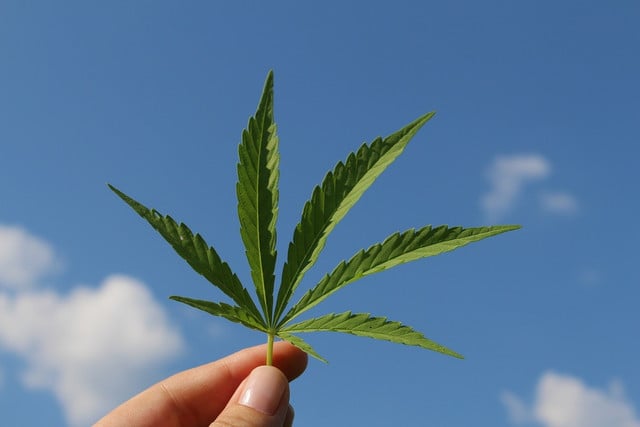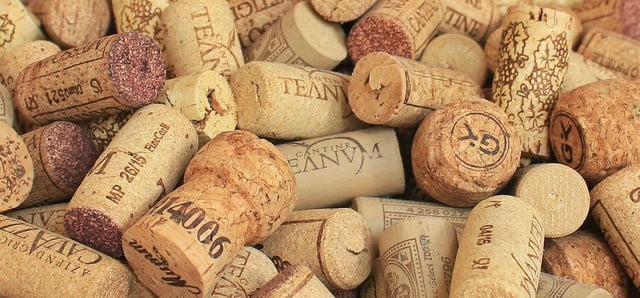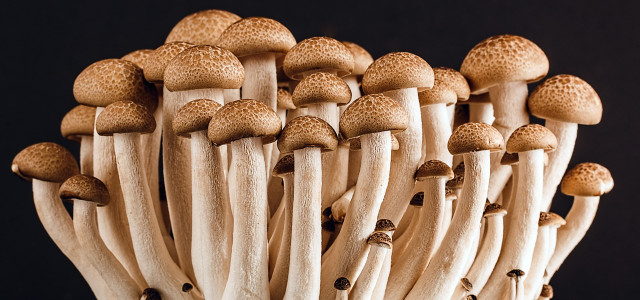Sustainable building materials are a matter of urgency if we are to combat our current climate and environmental crises. Find out what they are and learn about a few examples.
On his first day in office, President Biden brought the United States back into the Paris Agreement, which is determined to limit global warming to below 1.5 degrees Celsius and reduce greenhouse gases by 55% before 2030. Finding and adopting more sustainable building materials is an important step toward achieving this goal because, at present, 41% of global energy consumption can be attributed to existing buildings and structures. Our built environment also generates nearly half of global carbon emissions annually, and to top it off, around a third of the energy consumed in commercial buildings in the U.S. is wasted.
Our current approach to buildings and construction is simply unsustainable. Across the globe, authorities, governments, and scientists are researching, testing, and using sustainable building materials that promote a better future. Let’s take a look at the damage our current construction industry is inflicting and at some examples of promising sustainable building materials for the future.
Sustainable Building Materials For A Sustainable Future

(Foto: CC0 / Pixabay / pixundfertig)
According to the Energy and Environmental Building Alliance, many of our building materials, from wood to stone, to metals, and many others, have a devastating impact on the planet. Only three popular building materials — concrete, steel, and aluminum — are collectively responsible for a massive 23% of total global emissions and must be replaced in the near future if we want to save the ocean and the rest of the planet.
The Royal Danish Academy Center for Industrialized Architecture (Cinark) developed the Construction Material Pyramid to highlight the environmental impact of the most commonly used construction materials. It resembles the food pyramid and examines materials on the method of their extraction, transportation, and manufacturing. It also analyzes the following:
- Life Cycle
- Global Warming Potential
- Photochemical Ozone Creation Potential
- Acidification Potential
- Eutrophication Potential
Unfortunately, many of our commonly used materials, like cement, aluminum, and steel, are at the top of the pyramid. More sustainable options, like reclaimed and recycled substances (like steel) and various kinds of wood, are at the bottom. The Energy and Environmental Building Alliance warns that although a certain material may be considered sustainable, using it may still consume too much of our natural resources in order to be good for the environment in the end.
The World Green Building Council states that finding sustainable building materials will be one of the most effective means to achieving our global goals of addressing climate change, creating sustainable communities, and driving economic growth. There are many awesome examples of green architecture in the U.S., but we need to seriously address our existing building materials and structures as well. Check out our article on sustainable development and why it’s necessary to find out more about the urgent need for sustainable building materials. In the meantime, let’s take a look at some truly sustainable building materials.
Traditional Cob



(Foto: CC0 / Pixabay / jpduretz)
Traditional Cob is a mixture of natural ingredients from the earth — usually consisting of clay-based soil, water, straw or hemp and (occasionally) sand. Cob is one of the oldest building materials that is still used in many parts of the world today. It is usually used to create the walls or floors of buildings.
Cob has not been a permitted building material in the United States until last year after groups like the Cob Research Institute promoted the inclusion of this sustainable building material into the International Residential for building codes in the United States and several other countries. Although building with cob can be labor intensive, it is considered sustainable because it:
- Is affordable
- Provides substantial reductions in carbon dioxide emissions and construction waste because it is made with soil sourced on site.
- Is energy efficient
- Provides noise insulation
- Is long-lasting (if kept free from dampness)
Many cob-built homes that are up to six hundred years old can still be found in beautiful condition in Devon in the UK. Residents there claim that with the proper care, these houses will provide longevity. Moisture and temperature control are the two biggest challenges to this sustainable building material.
Recent research has shown that when cob walls are suitably compacted, straw reinforced, and composed of the correct balance of organic materials. they can resist total failure in flood conditions. Plus, an international research project led by the University of Plymouth has succeeded in bringing cob into line with modern temperature and thermal-regulation standards.
Hempcrete



(Foto: CC0 / Pixabay / TinaKru)
There are many emerging inexpensive and eco-friendly concrete alternatives. Hemp concrete, or hempcrete, in particular, is considered a potential raw material that supports a sustainable world. Hempcrete is made from hemp shives (the wooden parts of the hemp stem), lime, and sand. Traditional concrete is the second most widely used building material in the world and is made of cement, sand, and aggregates. Cement manufacture requires high temperatures, is among the most energy-intensive materials used in the construction industry, and generates substantial CO2 emissions.
Some of the scientifically proven characteristics of hemp concrete as a sustainable building material are:
- It is carbon negative
- It is lightweight
- It has a lower density than other forms of concretes
- It has excellent moisture buffer capability
- It displays low thermal conductivity and sound insulation
Hemp was grown widely in America before anti-drug sentiment made it unpopular and illegal in the 1950s. Constantly emerging research supporting the benefits of hemp eventually led to legal and cultural change toward the cannabis plant. The 2018 Farm Bill led to the removal of hemp from the Controlled Substances Act and the consideration of it as an agricultural product.
The U.S. Department of Agriculture (USDA) now oversees hemp cultivation and published a final rule last year that provides regulations for the production of hemp in the United States. The rule re-emphasizes that interstate transportation is now legal, even if traveling through a state that does allow the growing of hemp. It can grow quickly in a variety of climates and soil types, improves soil health, and needs little water to flourish.
Hemp has a massive range of medicinal and other uses, too — including:
- Superfood for energy
- Sustainable natural fiber
- Alternative fiber to make paper, composites, biofuel, and food industries
Bamboo



(Foto: CC0 / Pixabay / Pexels)
Bamboo is now a favorite and scientifically supported, sustainable building material across the globe. The world’s fastest-growing plant has an incredibly high self-generation and carbon absorption rate, making it a perfect sustainable building material alternative. Bamboo has a huge range of other advantages, including:
- Has the strength to potentially replace steel as the structural reinforcement material of choice in buildings
- Inexpensive
- Organic and easy to dispose of
- Can be grown locally in most countries globally
- Potential for wood alternative
Bamboo is highly versatile and offers a massive array of applications in buildings, including foundations, flyovers, multistory buildings, large span structures, interiors of airports, and recreational buildings. The major challenge with Bamboo is that it offers limited durability and longevity compared to other materials.
Mycelium



(Foto: CC0 / Pixabay / BuonoDelTesoro)
Many architects, scientists, and environmentalists have been experimenting with and analyzing mushroom mycelium’s sustainable superpowers. In fact, it is now considered a safe, strong, and biodegradable material with a wide range of uses by the World Economic Forum. Its application as a sustainable building material is just one of its superpowers.
Mycelium refers to the intricate network of root-like structures from which all mushrooms develop and grow. Not all mycelium produces mushrooms, and some varieties can grow for thousands of acres. The world’s largest organism is actually a mycelial network in Oregon’s Blue Mountains that spans nearly four square miles and could be 8,650 years old!
Mycelium composite is a substance that combines mushrooms with rice and glass to make light, yet durable bricks. The process is a low-energy and zero-carbon one. Mycelium fibers are also versatile, strong, mold, water, and fire-resistant.
Cork



(Foto: CC0 / Pixabay / pixel2013)
Ever wondered what cork is as you popped open the wine bottle? Extracted from the bark of the Cork Oak tree, cork is more than just a water-resistant plug for your favorite bottle of red or white. It is emerging as a leading sustainable building material and a highly versatile, organic substance.
Cork Oak forests are found in semi-arid regions of southern Europe and northern Africa. These forests have a range of positive impacts on the environment that include:
- Help to prevent the advance of desertification
- Improve water penetration into the soil
- Promote soil conservation
- Provides an ideal habitat for many animal and plant species
- Carbon neutral
If the tree bark is protected from the environment after bark extraction, it can generate new layers of bark quickly, and deforestation is not required to make cork. It is considered by experts to be a natural, renewable, and sustainable raw material that will help us meet the targets of the Paris Agreement. In architecture, cork has applications and uses in flooring, walls, roofs, ceilings, insulation, interiors, and concrete. It is also fire-resistant, water-resistant, flexible, and affordable.
Read more:
- Geodesic Dome House: What Is It — And What For?
- Can Dematerialization Help Build a More Sustainable World?
- What is Upcycling? A Guide to Repurposing Used Materials
Do you like this post?







